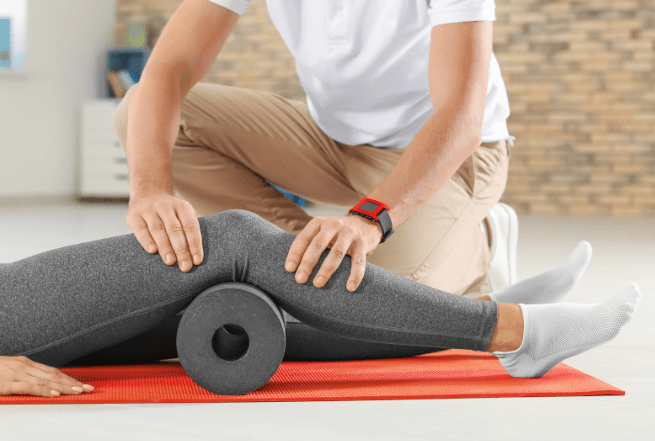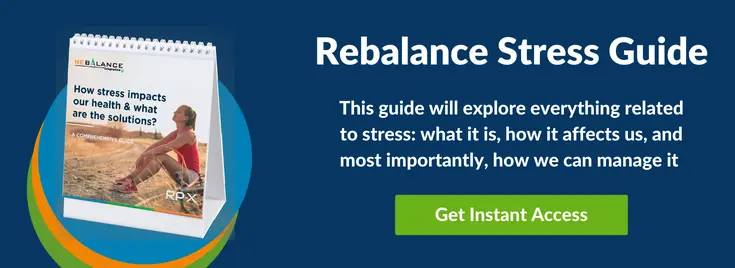WHAT ARE THE DIFFERENT TYPES OF COMPRESSION THERAPY?
When people hear the term ‘compression therapy’, they’d be forgiven for thinking there was only one type, and it involved wearing compression stockings on a plane or after surgery. The reality is, there are multiple types of compression therapy, with a wide range of clinical and wellness applications.
 Where the use of compression therapies was once limited to medical treatments, research into the benefits has changed all that.
Where the use of compression therapies was once limited to medical treatments, research into the benefits has changed all that.
Key technologies such as the ‘Revive’ intermittent sequential pneumatic compression device, have widened the market, helping non-medical users benefit from compression therapies as well.
In this article, we’ll look at some of the different types of compression therapy and their common uses. It won’t include every single obscure use of compression, but it’ll cover a good few of them!
COMPRESSION THERAPY - AN OVERVIEW
According to the Cleveland Clinic…
Compression therapy is a common treatment to help improve blood flow in your lower legs. It usually involves the use of elastic stockings or wraps. The elastic provides compression on your legs, ankles, and feet. This helps prevent blood from pooling and fluid from building up in these areas.
This is the fundamental logic of the approach.
The same mechanisms that make compression an effective medical treatment are the ones that make it work for general populations.
TYPES OF COMPRESSION THERAPY
Thanks to a technological evolution that has occurred over the last few years, there are multiple different types of compression therapy available now.
PNEUMATIC COMPRESSION
This is the kind of compression therapy that is most often seen in sports. It’s where garment or cuffs are worn over specific body parts, and a personalised form of pneumatic compression is administered via a pump unit. The user can control the strength and the frequency of the compression. It’s very helpful for reducing post-workout muscles soreness. However not all units deliver the same levels of compression which is essential to maximise the effectiveness.
When assessing which unit is right for you ensure you have a device delivering compression measured in mmHg which delivers exact level of compression to every chamber of the garment. Also pressures should not be more than 100mmHg. Most research points to pressures of 50 to 80mmHg maximum to improve blood flow and activate your lymphatic system. See information on the REVIVE product.
SEQUENTIAL GRADIENT COMPRESSION
This again is using a pneumatic compression device. Sequential therapy means filling each chamber in sequence from distal to proximal (ankle to hip for example), then releasing all chambers at the same time. Although some brands do deliver this the REVIVE technology is the only one that delivers this sequential therapy with gradient drop in pressure from distal to proximal, mimicking the body's natural way of moving fluid from high to low pressure. REVIVE is the true clinical compression technology optimised for athlete recovery.
COMPRESSION STOCKINGS
The compression stockings are the most basic of compression therapies. They are designed to stimulate blood flow by constricting the blood vessels, which in theory prevents blood pooling and assists with the movement of body fluids. These are most common because they’re cheapest and easiest to use.
COMPRESSION WRAPS
A common type of compression treatment comes in the form of compression wraps. It’s often used in the immediate post-injury window, where it is used to reduce swelling in a fresh injury. They’re a passive therapy, so aren’t as effective as the more active forms compression therapy such as pneumatic compression.
There are uses for all the different types of compression therapies, so consider your individual needs and requirements. The most effective forms of compression therapy are the more active pneumatic compression therapies.
PNEUMATIC COMPRESSION THERAPY - LEARN MORE
At RP-X we distribute a range of different pneumatic compression therapy products that can offer your clients all the health benefits of the treatment, improving their general wellness. Contact us to learn more about the products and services we offer and how it could be of benefit to you.
For more information on pneumatic compression therapy, pricing, and the right products for you, contact us on info@rp-x.com or 01234 862762.
Image Source: Canva



